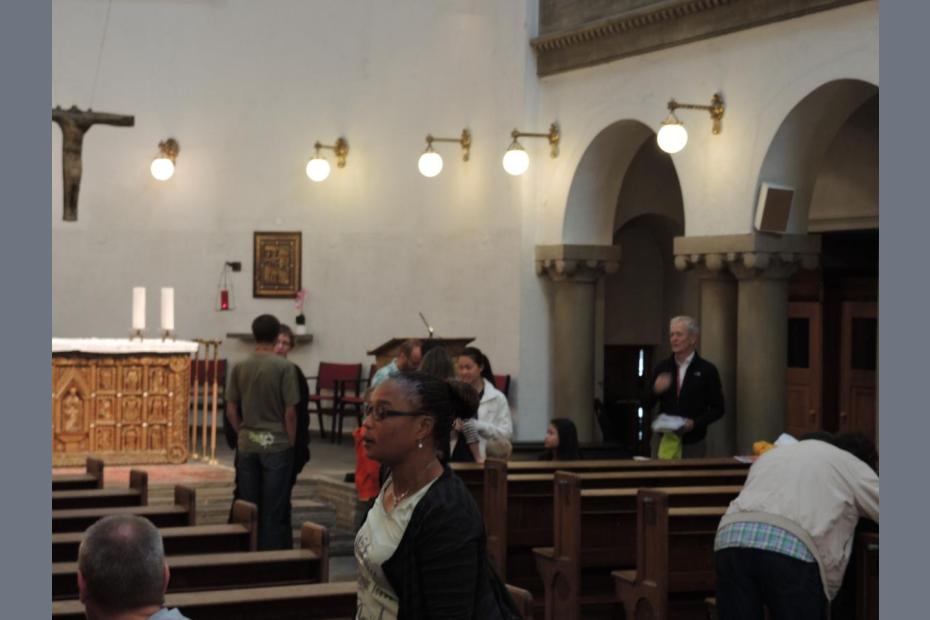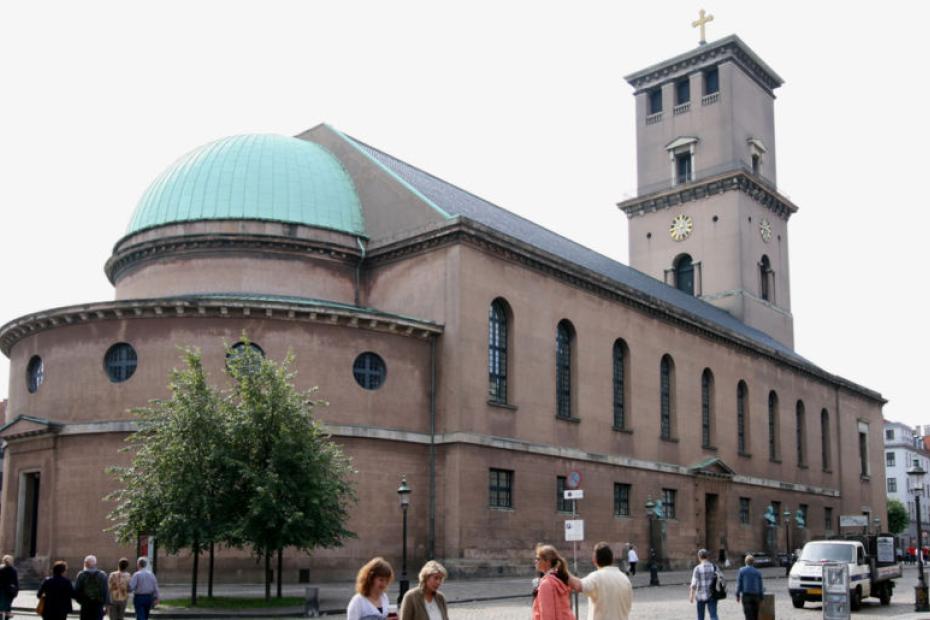The ideal way to capture the visual culture of Copenhagen might entail some photo of a stark, contemporary building next to a group of more traditional brick and half-timber buildings, with a church spire looming above them. That image reflects a society that wants to hold on to an identity rooted in a sense of traditional identity and particularity, even as it prides itself as having created new styles that are distinctive, modern and Danish. There are few places, except perhaps inside some office buildings, where a person would feel that he or she could be anywhere or nowhere in a generic commercialized world.
Church towers are highly visible on the urban skyline, often clad in oxidized green copper. Interestingly, height restrictions in the city mean that contemporary architecture is not allowed to overtake the spires of church and government buildings. Bikes and pedestrians, not cars, dominate many public ways.
Beyond the churches and towers, Catholicism, indeed Christianity, is almost never visible in public, the way it is in some countries by means of religious jewelry, bumper stickers or images in stores. This is consistent with the private and interior quality of Danish Catholicism, since Danes are also self-conscious about bringing religion into interpersonal or public conversations, regarding it as something to be cherished and most authentic when it is expressed internally. It also is a way to cope with a dominant secular culture that regards public religious expression with discomfort and perhaps as a threat to the social compact. According to a Eurobarometer report, 54 percent of Danes agreed that “the expression of a religious belief (for example, wearing a visible religious symbol)” puts a job candidate at a disadvantage compared to an equally talented peer.1
The homes of Catholics sometimes display simple religious images, though many Danes report that the high number of mixed marriages is one factor reducing the prevalence of such displays. Where there is religious imagery, it tends to be fairly simple: an unadorned cross, an icon, a simple Marian image.
Most churches, at least in the cities, are made of brown brick. Stylistically, a visitor would often need to read the sign on the front of the church to discern the denomination. Danish Lutheran church architecture is heir to Romanesque, Gothic, Renaissance, Baroque, and Neoclassical styles, usually revised so that they feature large open spaces in brick or whitewash, with clear, leaded windows. The penchant for white, open spaces, simply adorned, is as popular in churches as in homes, whether traditional or Danish modern. Modern churches are fewer around Copenhagen, though there are more in other areas of the country.
Catholic churches around Copenhagen have adopted more Romanesque elements, but not in a way that makes them stand out too much. The Cathedral of Saint Ansgar, in the palace and embassy area, looks a bit more Roman than other Catholic churches, and was built for Catholic embassy staff. Any visual Romanization there totally pales in comparison to the Petrine-domed, baroque Frederickskirken, the nearby Lutheran church across from the royal palace.
- 1"Discrimination in the EU in 2012," Eurobarometer 77.4, Rep. European Commission, 2012, http://ec.europa.eu/public_opinion/archives/ebs/ebs_393_fact_dk_en.pdf.















